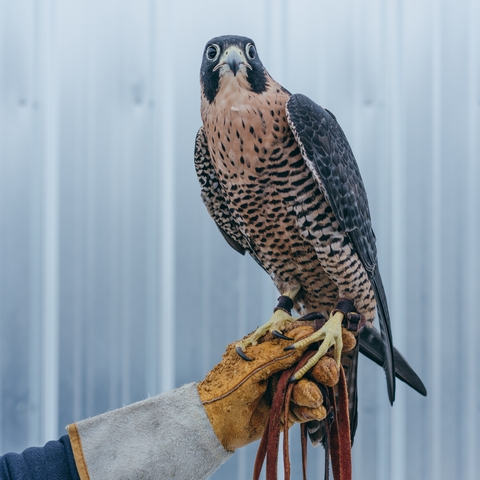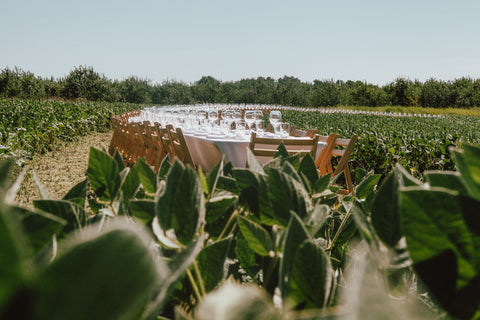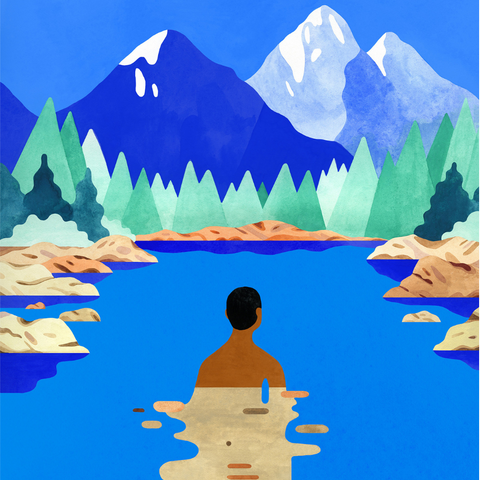TEXT AND PHOTOS : Charles PostThrough the eyes of raptors, migrations and the fabric of conservation span across hemispheres.
Every fall, the rains came. Sometimes our backyard was so flooded, it looked more like a pond than a garden. Home was a redwood-peppered town just a few minutes wide and four dozen north of San Francisco. Back then, it rained so much that the local creek just beyond our back fence swelled not only with water but also with fish; wild salmon to be exact.
But as the redwood trees and I both accumulated growth rings throughout the late 1980s and 1990s, fewer and fewer salmon returned each fall as their upstream habitats were lost to development and snuffed out by dams. Downstream, their ocean ecosystem continued to decline from pollution, warming temperatures, and algae blooms.
Most couldn’t hang on any longer. They had returned to our backyard creek every year for millennia, but gradually slipped towards local extinction. When the flood waters calmed, we would see the last few stragglers with their humped backs and hooked jaws pressed against the base of the little dam just upstream. A poorly engineered barrier meant to manage overflow was actually preventing the wild salmon from continuing their upstream journey to spawn, die, and recycle their bodies back into the freshwater ecosystem that had sustained their kind for countless generations.
On a sunny October day, my dad helped me climb over the fence that lay between the bike path and the creek below. Armed with a five-gallon bucket, I caught one of the tired salmon, carried it upstream past the dam, and released it in a quiet stretch of water so that it might continue upstream like it had intended. In that instant, I came to understand something that would transform my life: I was passionate about wildlife and nature—but how could I sculpt that awareness into a lifestyle and occupation? I didn’t know then. It took me nearly a decade of studying ecology at UC Berkeley to realize that what I really wanted was to make films celebrating conservation and illuminating the narratives of our rapidly changing wild landscapes.
As I walked out of the UC Berkeley Integrative Biology building for the last time, newly armed with a Masters of Science degree, birds were on my mind. I always kept an eye out for them and recorded every species that frequented my tiny home tucked away on the Point Reyes Peninsula, only a few miles away from my salmon stream and childhood home. My favourite among the avians was the American dipper, a flying trout of sorts, which had been the focal point of my graduate research. I am no card-carrying birder, but I did grow up birdwatching with my grandmother, who kept a small metal bale full of seeds to make sure our backyard birds never went hungry or strayed too far from our breakfast window.
Shake my hand, and I’ll tell you I’m an ecologist. By definition, I’m interested in everything from the insects to the salmon and predators that pursue them. But although I did initially seek to investigate river ecology in grad school, my world view has since been largely shaped, in particular, by the behaviours and migration patterns of birds.

Canaries in the Coal Mine
Migrations are these epic events in nature that bind distant lands together. They exist because wild landscapes exist, landscapes that connect forests in the far north to grasslands in South America. Every fall and every spring millions of birds flood our skies. Often it’s just a matter of looking up to see all this unfold. In general, birds migrate south in the winter and north in the summer. Of course, some populations and species deviate from the overarching theme: some will hook a west or east depending on the weather and the innate peculiarities of the flocks with whom they migrate. And it just so happens that the raptor migration down the Pacific Flyway passed right over my childhood home every fall and spring, though I didn’t start looking up until high school when my science teacher suggested I should. So I did, and I haven’t stopped since.
Over time, the science community has come to recognize birds as indicators of ecosystem health. They are bellwethers of our planet’s well-being for one simple reason: they rely on an entire intact food web to support them. An eagle might prey on rabbits, which rely on a healthy vegetative community, which in turn relies on water availability and fertile soils. And a soil’s health directly leans on a community of organisms like moles and worms, as well as microbes, bacteria and fungi, all generally considered to be the farmers of good soil. If we start pulling this vast network of links apart, the broader fabric begins to fade and collapse. Just as sharks are the ocean’s mirror of health, birds are reflections of their ecosystems: seabirds of the sea, hawks of the grasslands and forests, and hummingbirds of flowering plants. If a system slips too far into decline, the birds will be among our first indicators that something is wrong. They’re, quite literally, our canaries in the coal mine.

Concrete Jungles
Wildlife isn’t only a mirror for wild places. Some raptor species have adapted remarkably to the built environment.
In urban areas, you might see a stooping peregrine hunting pigeons between the skyscrapers, or even a red-tailed hawk perched atop a telephone pole, its eyes keenly scanning for any slight rustle in a highway median, or an unsuspecting mouse. Even great horned owls are colonizing the outskirts of our cities, picking their favoured perch amongst lone stands of trees in someone’s backyard or a soccer field, to prey on careless rats scurrying at night. Their adaptable nature predisposes them to success in our rapidly changing world. Other birds, like the American kestrel and the golden eagle, are not so fortunate. They require very specific, balanced habitats and ecosystems to thrive, many of which are disappearing as humans encroach further into wild landscapes, guided by our insatiable hunger for progress at any cost.
HawkWatch International works to prevent exactly this fate. A bright thread in a greater community of environmental stewards and scientists, they are rushing to conserve healthy ecosystems for raptors through education, long-term monitoring, and scientific research. Over the past 30 years, they’ve maintained 13 research stations, from Washington and Montana in the north to central Mexico in the south. The front lines of conservation are manned by hundreds of members, scientists, and volunteers who have worked at these research stations over the past decades, trekking up to the tops of mountains just for a chance to be part of every ephemerally striking migration, to see it first-hand.
I remember sitting quietly in the blind alongside scientists and volunteers, our binoculars scanning the horizon for the slightest trace of a feathered silhouette. And how we held our breath when, at last, a radio call from our lookout would inform us that an eagle was headed our way. The crew would lower a pigeon to the ground (within a series of mist nets protecting it from potential harm from the hungry bird suspecting an easy meal). Seconds later, an eagle would get wrapped up in the layers of mesh between it and the bait bird. The crew would hurry to the bird, gently untangle it, and carry it to the banding station to collect various measurements (wingspan, weight, etc.) and attach a government-issued identification band to its ankle. Moments later the eagle was free. The feeling of placing your hand on one of these birds brings you one step closer to understanding them: a wild, living, breathing bird rich with life, likely never before touched by any human. The data they collected shed light on long-term migration patterns and raptor health. This information helps inform science and policy so that raptors and the wild ecosystems that sustain them might stand a fighting chance in the future.

My film, Sky Migrations, celebrates this story. It illuminates the role that raptors play as bellwethers of planetary balance, and the work of stewards hell-bent on ensuring raptors continue to flood fall and spring skies from Alaska to Argentina. It is a reminder that birds of prey are forecasters for the future we hope to share with our kids and grandkids. It is through their salvation that we might leave behind a healthy planet, and a legacy of pride.
As I look ahead days, months, and years down the road, I know I’ll be able to bring my kids up here to the brow of great mountains where raptors are borne by the currents overhead. Their conspicuous feathered thumbprints in the sky will remind us of the fate of the salmon, and of the power of giving our hearts and hands to ensure that these migratory species do not fade away.
They say it takes a village to raise a child. I would argue that it takes at least a hemisphere to raise a raptor.
---
Charles Post released Sky Migrations in 2017, a film he co-directed with Max Lowe and Forest Woodward and which chronicles his time with HawkWatch International during a migration, following golden eagles for a thousand miles—a fraction of their entire route—just long enough to peek into their remarkable journey.





